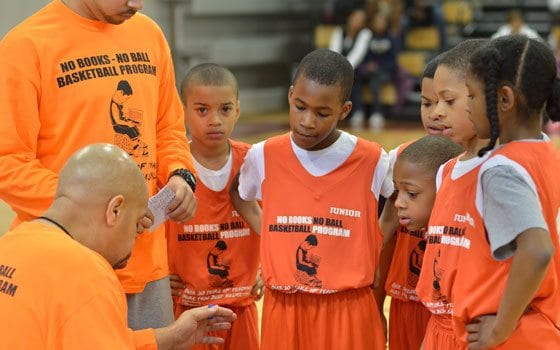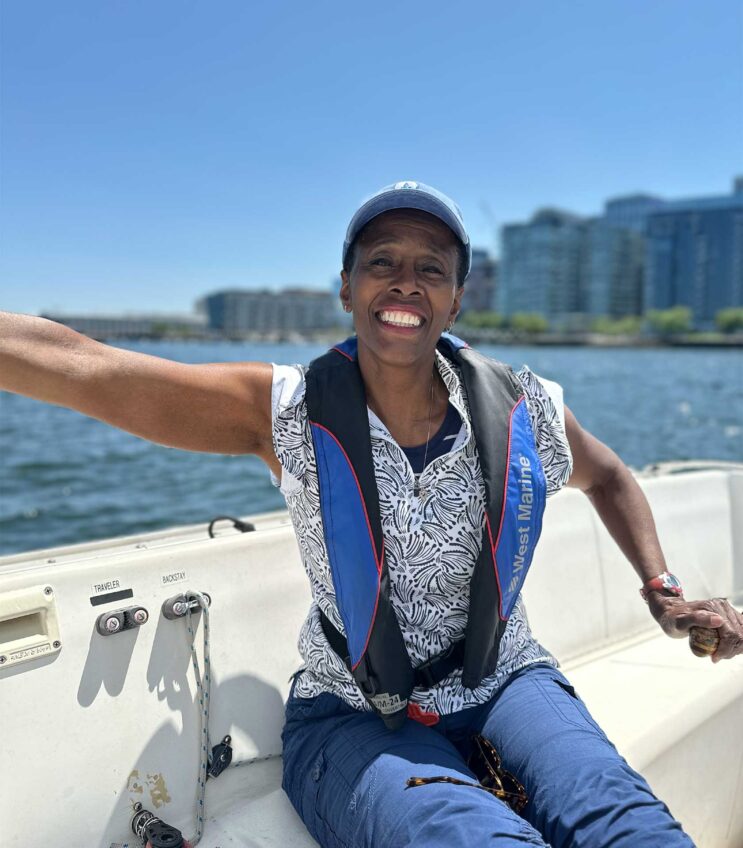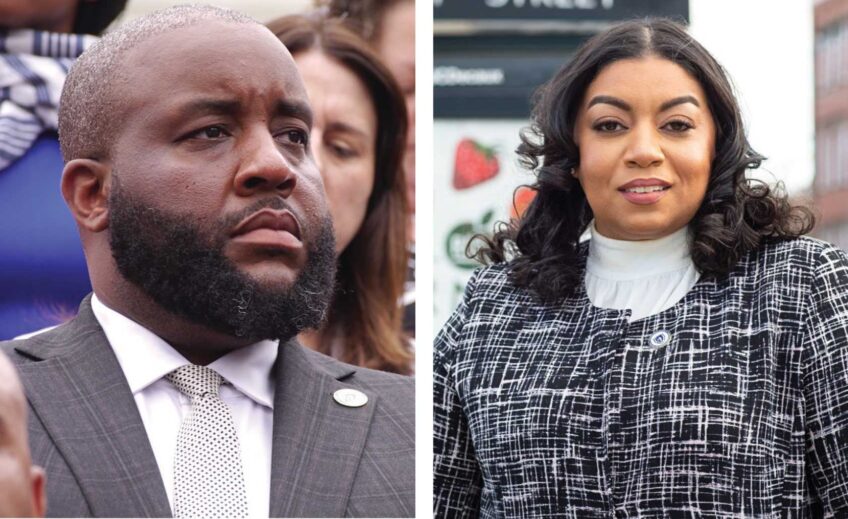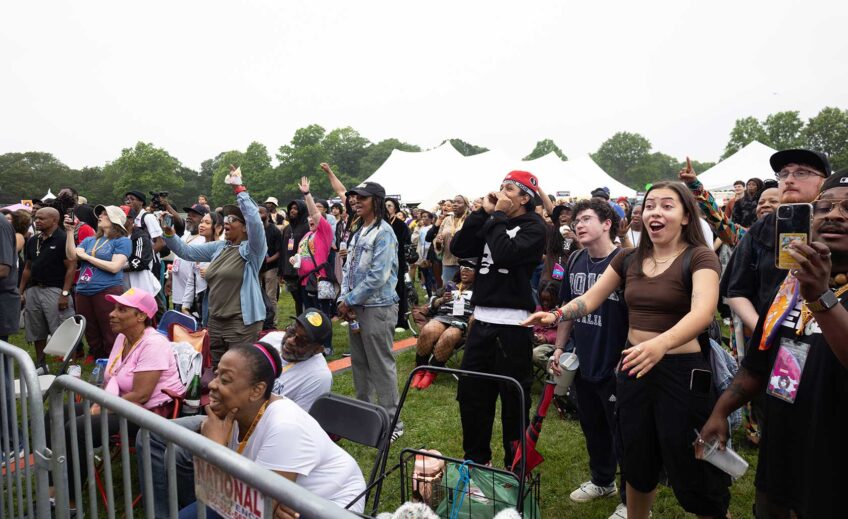

Author: Daniel Irvin“No Books No Ball” founder and executive director Tony Richards gives strategy and direction to his players during a quick time-out at the John A. Shelburne Community Center on Jan. 19.

Author: Daniel Irvin“No Books No Ball” founder and executive director Tony Richards gives strategy and direction to his players during a quick time-out at the John A. Shelburne Community Center on Jan. 19.
If you’re not balling in the classroom, you won’t be balling on the court. It’s that simple.
The young all-stars in Tony Richards’ “No Books No Ball” program know this. That’s why they can’t wait to show off their report cards and academic rewards during the marking term.
They want to play. They have to play. And as long as they maintain a C average in school, they can.
Since its inception in 1990, parents from all over the state have been vying to get their kids a spot. Everybody wants dibs — so much so that every October, when registration opens, Richards isn’t surprised when capacity is reached two weeks later.
With 23 years under his belt as founder and executive director, Richards is just glad to see the program thriving and touching the lives of the city’s young people.
It’s all he’s ever wanted.
“[We were] trying to educate the kids on the importance of academics partnered up with athletics,” said Richards. “I never really realized … the program would be operating this long.”
As a parent and active community member, Richards recognized a need for an outlet that combined aspiration, achievement and athleticism while shielding kids from the potential perils of the streets. Seeing none, he created “No Books, No Ball” — never once dreaming it would be such a treasured jewel in the community.
Walk into the gymnasium of the John A. Shelburne Community Center Saturdays between noon and 6 p.m. and evidence of enthusiasm for the program can be seen all around.
During the second week of games, on Jan. 19, family and friends of different ages and ethnicities gathered to show their support. Some traveled from places as far as Westwood to be present while others came from neighboring streets and areas. This was not unusual, as any child, regardless of where they live, can participate.
Proud parents held video cameras steady, careful not to miss one move while others willingly became their son’s and daughter’s personal cheerleaders.
The program runs from October to April and has 220 kids aged 6 to 17 enrolled this year — which is only a fraction of what it’s been in the past. And of the 30 coaches now volunteering, many are former “No Books No Ball” graduates themselves.
“I used to play in this league when I was a little kid. My cousins and a lot of my friends I grew up with played in it, that’s why I decided to coach in it now,” said Coach Emmett “EJ” Burton, 25, of Roxbury.
“I’ve grown up watching the ‘No Books No Ball’ organization and it’s always been great to see men and women from the community come back and give back to the youth in our neighborhoods to try and help them out,” said Coach Rufus Faulk, 31, of Roxbury. “But it’s bigger than basketball. It’s about giving life skills, support and some guidance to kids who may have it or may not have enough of it at home.”
The fun and joy younger players have is something they can’t keep secret. They often convince their friends and family to join by the next season.
“This is my seventh year in the program and it’s just fun and competitive. We get to hang out with each other as friends and it keeps us safe,” said Taneja Drayton, 13, of Dorchester.
“My favorite part about coming is playing with my friends, playing teamwork and hustling,” said Aaron Cooley, 10, of Roxbury.
Parents couldn’t be more pleased with how the program is run and the reactions their children have to it. Many notice a difference in them when Saturday rolls around.
“This is [Jack’s] first year playing, but he enjoys the kids and he enjoys the competition. It’s a nice atmosphere, a nice community and a nice group of people. We’re enjoying it,” said John Terzian, 56, of Westwood.
Keith and Robin Marion’s 11 year-old son Mason has been playing in “No Books No Ball” since he was 6.
“We signed [our son] up because we are from the community,” said Keith Marion of Dorchester. “I’ve had an opportunity to get a lot from the Shelburne as well, and they do an excellent job of giving back to the kids and really coaching them the fundamentals as well as giving them positive role models. It’s not just a basketball thing; it’s more of a community thing,”
Before getting into game mode, the first five weeks are spent conditioning and teaching fundamental skills like dribbling, defending and shooting. The players are then broken down into divisions by age and assigned coaches, and participate in team practices during the week before facing the other teams in their division.
“At the end of the season, six players — one boy and one girl from each of the divisions — receive awards and special recognition as our best student athletes,” Richards said. Everyone gets a trophy for their hard work and effort all season long, too.
At first, Richards had help from brother-in-law Vance Mills and a “body of family members” to get things started. Today he has support from hundreds of families, former participants and the community. At day’s end the most fulfilling aspect of it all are the success stories he receives. They make it all worthwhile.
“To see those kids that have benefited from the program and know how much of an impact a lot of the coaches have had in their lives are the success stories,” said Richards. “When you see a kid whose life you know you touched that may have not had the structure in his home … [it’s] a reward.”






